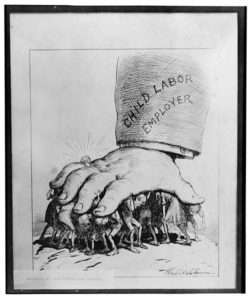About this Human Resources course

Course Navigation:
- What Is Human Resource Management?
- History of Human Resources
- Future of Human Resources
- Challenges & Opportunities in Human Resources
- Next Steps for Human Resources Professionals
This free online human resources course directs you toward free courses, videos, podcasts, and resources coupled with questions to aid in processing this critical field. Each component is created to encompass two to three hours of learning material.
Whenever you see this icon, it is time to stop and watch, listen, or read and reflect.
At the end of each component in this free course is an opportunity for to invest further within a wide range of financial and time commitments. These investment suggestions offer courses, certifications, or associations to consider to further studies and enrichment in the field of human resources.

1│What Is Human Resource Management?
Human resource professionals are responsible for managing an organization’s employees, who are the organization’s human resources. Many smaller organizations have just one HR employee, while others have entire departments. An HR manager’s role is vital because employees, many would argue, are an organization’s most important resource.
The mission of human resource management is to ensure employees are compensated, trained, and managed appropriately. This includes recruiting, hiring, and firing employees. They are also the ones to manage employee benefits, such as retirement plans and health insurance.

Organizational Culture
Human resource managers also play an important role in shaping organizational culture. Since the HR manager’s goal is to ensure an organization’s employees are used effectively, a positive organizational culture is imperative for happy, well-performing, satisfied employees. It’s also their job to help weave an organization’s mission, vision, and values into the culture.
In order to shape a culture, you must first understand it. To get a better idea of how this works, let’s start with this article about how to understand your current organizational culture. As you read, be sure to do the exercises laid out. This practice will be beneficial as a human resource manager in assessing strengths, gaps, and negatives in any organization you are part of and will help you implement changes for the better.
What’s in a Name? Embracing the Humanity in HR
There are those who take issue with the name “human resources.” To be fair, most employees would prefer not to be viewed with such a commodifying title and rather have their organization see them for the people they are. In response, many organizations have renamed their HR departments and manager. Today, you’ll hear HR departments called by many other names: Employee Experience, People Operations, or Employee Success. Some titles HR managers might hold instead include: Chief People Person, Head of People, or Employee Happiness Cultivator.
But this shift must go beyond simply title changes in order to have a truly positive impact on how HR effectively supports employees. We’ll look at future trends in HR later on, but for now, take some time to watch this video about recent trends in the field. Twelve trends are discussed in this video. In implementing them, how could an organization’s HR department better care for employees, and what are the ripple effects that these trends might have across the organization?
Watch this interview from TRAFFIT, a recruiting CRM company, with Tomek Jurek, the Head of People at Future Mind. In this interview, Jurek discusses what he does in his role. Listen for how he describes the importance of recruitment in shaping an organization’s culture. Going off this idea, sketch out a mind map that lays out your organization and how each piece managed by HR connects to and shapes the organization as a whole.
Further Thought
Alison.com offers a free course in human resource management. This course will take eight to 10 hours to complete, and it covers the ins and out of hiring, onboarding and training, and motivating employees in an effective way. This course is aimed at someone with an intermediate knowledge of human resources. While it’s entirely free to complete the course, you will have to pay a fee if you wish to earn a certificate.
Further Investment
Get certified through the HR Certification Institute. HRCI has been around for more than 40 years and is one of the top credentialing organizations for HR professionals. HRCI offers courses for all levels, from those just starting out to those seeking to specialize to those looking to upskill. Depending on which certification you’re going for, the price and duration will vary. There is an exam required in order to earn most certifications. Learn more about HRCI and the certifications they offer.

2│History of Human Resources
Early Human Resource Management
Since human resource management is about managing, well, humans, you could posit that some of the earliest forms appeared in the context of slaves, serfs, and indentured servitude. It’s certainly not the most auspicious early history.
As you read the beginning of this article, consider the relationship between master and servant, slave, and serf, and note the evolution through events like the Industrial Revolution into today’s employer-employee relationship.
Industrial Revolution
The Industrial Revolution in Europe and North America in the late 1700s, in some ways, is the advent of modern human resources management. Because new, large-scale industries were replacing smaller, cottage industries, they needed new structures for organizing the massive influx of workers. A new class of managers was created, who were considered higher up than the average worker, creating an economic gap between workers and management. As this gap increased, the conditions of the workers decreased. Both of these aspects of the Industrial Revolution influenced early human resource management in the U.S. Initially, the goal was to help the influx of recent immigrants assimilate into “American” culture by learning English, finding accommodations, and obtaining medical care, in addition to on-the-job training to ensure high levels of productivity.

In the 1790s, Labor Unions began forming in an attempt to move power into the hands of the workers and provide better working conditions. Issues they rallied around included fair wages, child labor, safe working conditions, and reasonable hours. Throughout the 1800s and early 1900s, the number of labor unions rapidly increased, yet, it remained illegal for many workers to participate in a labor union until 1935. Workers used strikes, walkouts, slowdowns, boycotts, and other similar tactics to force managers and owners to adopt systems and policies to improve worker/owner (or manager) relationships.
Early 1900s
In 1913, the United States Department of Labor was established to encourage and develop workers’ welfare, improve working conditions, and provide employment opportunities. This was part of a movement around social responsibility and the idea of the organization or owner as a parent and the worker as a child needing protection and correction.
The creation and evolution of the Department of Labor provide an important backdrop to how businesses in the U.S. are managed today. Spend some time reading about the creation of the DOL. How do you see the DOL still following in the path of its original intent, despite all the changes that industry and labor have undergone over the past 100-plus years?
Also, in the early 1900s, Frederick Winslow Taylor came about with his philosophy of scientific management using a theory of motivation. He believed that workers were inherently lazy and must be motivated to do the work. Watch this video on Taylor’s scientific management. What vestiges do you see, if any, still present in today’s field of human resource management?
1930s-1970s
In 1935, the National Labor Relations Act became law, which gave workers the legal right to be part of labor unions. But the context of the act is important. As mentioned earlier, the NLRA was signed into law in a period of labor strikes, walkouts, slowdowns, and the like, which interrupted business. The text itself says that the NLRA is intended to eliminate issues that hinder the free flow of commerce. One of the ways to do this was by making labor unions legal, potentially cutting down on protests such as strikes.
It’s dense, but spend some time reading the text of the NLRA. What’s your take on the NLRA and its support for workers?

The year 1935 also saw the establishment of the Social Security Act, followed by the Fair Labor Standards Act in 1938, which set the minimum wage for workers. In the 1960s and ’70s, the Equal Pay Act (1963), Occupational Safety and Health Act (1970), Civil Rights Act (1974), and the Employee Retirement Income Security Act (1974) were all passed. In the 1990s, Congress also passed the Americans with Disabilities Act. All of these pieces of legislation were intended to ensure the safety and protect the rights of workers. All these acts led to increased importance on what, today, we consider human resources since organizations needed protection to avoid possible lawsuits. By the 1980s, human resource management was found at nearly all organizations, large and small, and HR managers began to oversee hiring and firing in addition to managing record-keeping, salaries, employee relations, and the like.
Further Thought
Take a tour through this HR PowerPoint (which is linked at the very end of the page). This presentation covers American history from the colonial period through the present day, focusing on the economic, political, and social movements that helped shape human resources today. As you go through the slide deck, spend some time connecting how the development and evolution of human resource management are placed within the time.
Further Investment
Join the Society for Human Resource Management. One of the largest human resources professional organizations today, SHRM was founded in 1948. Today, the organization provides training, education, networking, and certification to its members, in addition to being active in lobbying in Washington, D.C., on issues around labor management.

3│Future of Human Resources
Before a new year begins, the HR Trend Institute puts out its top trends to watch in human resources for the coming year. Here are their top 11 trends for 2021 in HR. We’ll cover some of these in this section. Hopefully, these trends will pique your interest in where the field of HR is headed.
Being a Catalyst

With the massive disruption of life as we knew it in 2020, many organizations are still trying to find their stability regarding what life, work, and enterprise will look like in the next few years. And here’s where human resources might find a real foothold in helping shape how their organizations are structured and function. Especially for those organizations that have been around for some time, much of their processes, culture, and structures were codified and hard to change. But with the changes of 2020, so much that was sure, fixed, and “how things are done” flew out the door. This leaves the possibility of real change within an organization.
Here is a piece on how HR can be a positive catalyst for change. Considering your organization’s current reality, what kind of opportunity do you, as an HR professional, see for helping institute the change they are discussing?
Remote Work
Remote work is the present, but it’s also the future for human resources. One of the significant struggles is how to keep an organization’s culture alive and well when employees are physically together. And, spurred on by the COVID-19 pandemic, because remote work might very well become the norm for many organizations moving forward, this is an area that HR managers will need to navigate.
A joint study from the University of Georgia and the University of South Florida looked at how employees have adjusted to remote work with COVID-19. You can read the full study, but for an overview from an HR perspective, check out this article. What stood out to you from the results as an HR professional?
Here are perspectives from four HR leaders on how they’re making it work. Consider what ways your organization has been working on keeping your organizational culture alive and if they are long-term strategies for the future.
Technology

Another shift that was already coming but expedited by the pandemic in 2020 was the role of technology in human resources. Some technology will help reduce the time employees need to be physically on-site for their roles, such as robotic process automation, virtual reality, and AI. If you’re curious what something like RPA can do for HR, here’s a piece that lays out 12 examples.
Since one of the significant roles for HR managers is recruitment, something to look for in the future is a deeper use of AI in the recruiting realm. HR company Phenom is all about helping organizations recruit talent. In this video, they cover the role of conversational AI when it comes to recruiting. Considering that human resources are all about people, who are inherently complex, what is your perspective on AI being used in this role?
Here are two pieces from Forbes where HR professionals discuss what they see in terms of technology in the field in the future: about the future of tech in HR and how tech is improving the way HR professionals work. As you read, what are some themes that jump out to you that can be connected to this larger shift in the field toward a more people-driven approach?
Further Thought
Tom Haak from the HR Trend Institute laid out his top 11 trends in HR for 2021. But if you’re curious, he’s listed some suggested books to read that go along with these trends if you’re looking for further insight.
Further Investment
Take the Human Resource Management: HR for People Managers Specialization through the University of Minnesota with Coursera. This is a course for those at a beginner level. It will take about six months to complete if you put in about four hours each week. You will learn about fundamental principles, practices, and policies around HR.

4│Challenges & Opportunities in Human Resources
Organizational Culture
We’ve already touched on the role of HR in helping to create and sustain an organization’s culture. A positive working culture ultimately leads to happier, more productive, long-lasting employees. But organizational culture, because people shape it, is a complex thing to navigate.

Draft a list of some dos and don’ts when it comes to building a positive organizational culture. When you’re done, compare your thoughts to the ones listed here.
A common approach to building a positive culture at an organization starts with the organization’s core value. In theory, everything that happens at the organization should be guided by and built upon these values. And it’s crucial that everyone, from HR and leadership to your employees, is aligned with the values. In your experience, have organizations you’ve worked for used a value-first approach to culture building, and was it effective?
A different take is the notion of a culture being built from the outside in. In this episode from the Future of Work Pioneers podcast, host Dr. Harpreet Singh and guest Dr. David Ulrich explore, among other things, this idea of an outside-in approach to creating organizational innovation and culture. Organizations should aim to be the employer for the types of employees that their external stakeholders would want. What’s your take on this perspective, and do you feel it’s divorced from a value-driven focus on culture?
Many organizations make hiring decisions not just on skills and experience but also on the culture fit. From an HR standpoint, what is your perspective of including using “culture fit” in hiring decisions? Jot down what you see as positives and drawbacks in a “culture fit” mindset. Once you’re done, read this article that posits this type of hiring might be detrimental to an organization’s culture. What’s your take?
Diversity, Equity, & Inclusion
One of the current hot topics in organizations is around diversity, equity, and inclusion. These are terms that are used a lot and can also be incredibly loaded. So let’s start with some definitions. Before you read this article, can you explain what diversity, equity, and inclusion are? Why do these matter in an HR context at an organization?
A lot of DEI efforts in an organization are measured by, well, numbers. And metrics certainly have their place. But, because DEI is dealing with people, and people (as we’ve said before) are complex, HR managers need to go beyond numbers to help create true DEI change.
Read this piece by David Ulrich, who we heard from earlier in this free online human resources course. What assumptions must an HR professional examine when it comes to sustainable DEI structures? What are the challenges when exposing these assumptions, and what does an organization stand to gain?
It’s important to note that diversity, equity, and inclusion efforts need to be ongoing. There is no competition when it comes to systemic change around DEI. But, there are tools and strategies that human resource professionals can use to help create effective change.

Watch this interview with HR professional Kristina Kohl and make a note of how the HR technology mentioned could be used in your organization’s context.
Digital Capabilities
Speaking of HR tools, expanding digital capabilities is one area of immense opportunity in the field at the moment. The technology is available so that, with the right tools and systems in place, there can be, for example, integration between your recruitment system and your training system.
This interview gives an overview of the opportunities available to HR managers who work to build up their digital capabilities. When you consider your HR department (or the HR department of another organization you’re familiar with), what digital capabilities would bring the most value?
Further Thought
As the world continues to change rapidly, so do organizations. This means human resource management is also constantly evolving. HR company Phenom has created playbooks for HR professionals to help them navigate these challenges. These playbooks virtual recruiting, employee agility, and talent recovery.
Further Investment
Take a course from Coursera on diversity and inclusion in the workplace. This is a beginning level free course that will take you about eight hours to complete. There is an optional certificate you can earn by completing this online course.

5│Next Steps for Human Resources Professionals
Consider Your Traits
Human Resources is a people-heavy profession and deals with complex challenges regarding employees’ careers and future with your organization. You’ll want to be sure you have the skills to calmly and objectively manage tense situations in an unbiased manner. It’s crucial that employees feel safe and comfortable coming to you with issues or questions, so empathy can be a helpful trait to possess as an HR manager. You’ll be dealing with confidential information, so it’s also important that you’re trusted within your organization.
Jot down a list of some traits and skills that you possess that would benefit an HR manager. Read through this list of some others to compare and maybe add to your own.
Pick Your Niche
There are a plethora of options when it comes to a role in Human Resource management. If you work for a small organization, you could be an HR generalist, which requires a wide breadth of knowledge. Or you could specialize in recruiting. Some HR managers are employee training specialists. Here are some different human resource roles to consider if you’re unsure which direction you’d like to head in yet.
Like all fields, Human Resources is continually evolving, and new types of roles are created to serve these changes. This article from the Harvard Business Review looks at 21 future HR roles. As you consider your career interests and track, think about how these trends might fit into your plans.

Continue Your Education
Certifications aren’t required for many HR roles, but as you grow in your profession, they are something you’ll need to look into. Check with your organization about education benefits or professional development to help you earn your certifications. Some common certifications to consider are Professional in Human Resources (PHR), Senior Professional in Human Resources (SPHR), and the Global Professional in Human Resources (GPHR).
If you’re wondering which certification might be the right fit for you, take this quick assessment from the HR Certification Institute to help you decide.
Learn about HR Software
Because many human resources departments use tracking systems for pay periods, compliance, training, recruiting, off-boarding, and more. Manually keeping these systems up to date can be tedious and leaves room for human error. But there are many HR tools on the market right now that help human resource managers automate their systems, saving time and making things easier for everyone involved. If you’re new to human resources, it’s great to have a general overview of some of the top HR software tools out there right now. And if you’ve been in human resources for some time, it never hurts to reevaluate if the tools you’re currently using are serving their purpose.
Here’s a piece from PC Magazine on their pick for the top HR software right now. Are any of these already familiar, and if so, what was your experience like? Do any new ones pique your interest in particular?
Further Thought
There’s so much to learn about the field of Human Resources. But there are also a ton of podcasts out there dedicated to various areas of HR. If you’re particularly interested in recruitment, check out the Recruitment on the Go podcast. The Workology Podcast is aimed at HR managers and leaders who are looking to disrupt the status quo. If you’re looking for more sources of knowledge, inspiration, and training on your HR journey, here’s a list of 17 podcasts you might want to check out.
Further Investment
Take a course or enroll in a program from the Academy to Innovate HR. AIHR offers a wide variety of courses in people analytics, digital HR, recruitment, and more, including certificate programs. With the Full Academy License, you’ll get access to all of AIHR’s current and future courses for a year and a half, which is currently 24 courses and six certificate programs.

This is the end of our free online human resources course. We hope it gives you a good background on the topic!